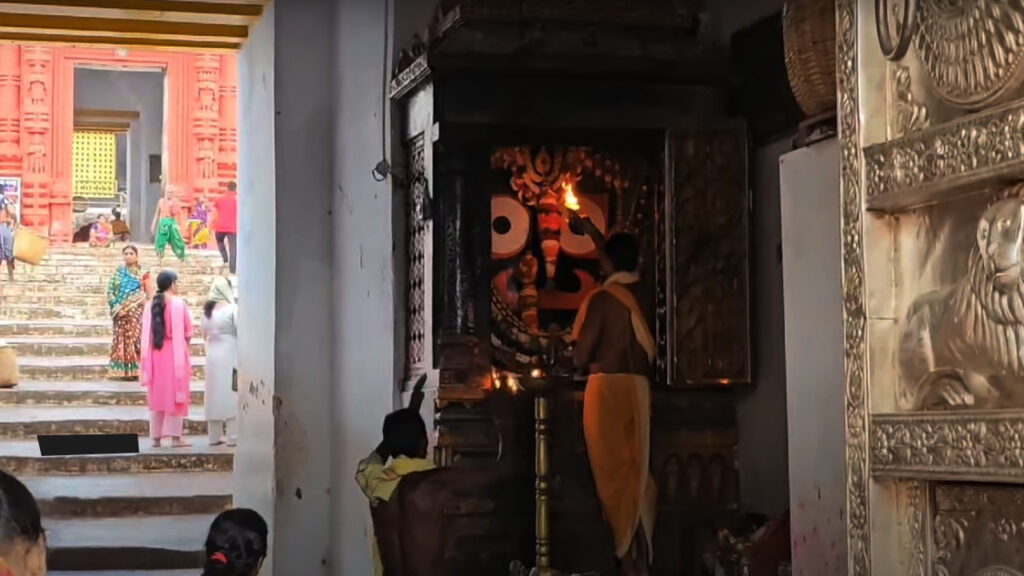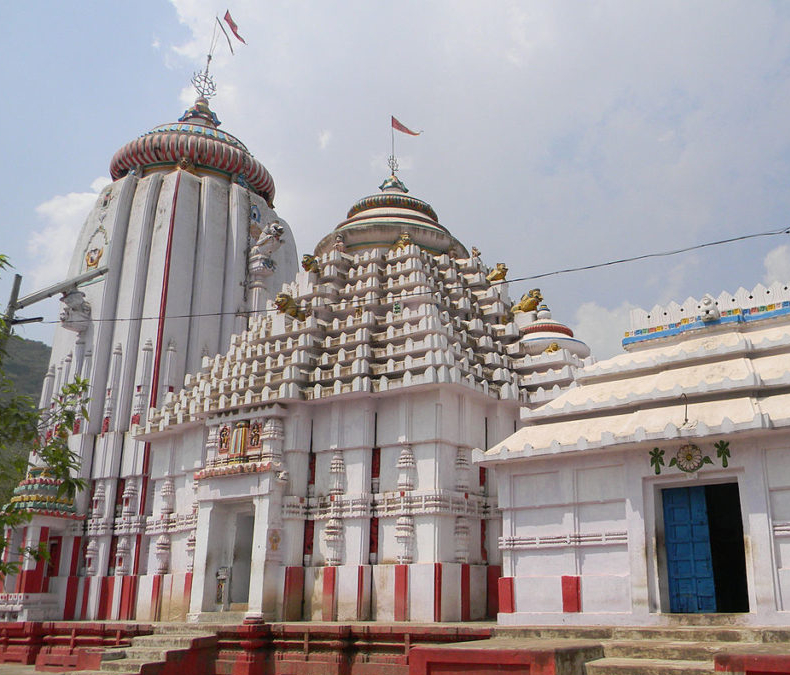Jagannath Temple in Puri, Odisha, is one of the most revered and ancient temples in India. It is not only a significant pilgrimage site but also a treasure trove of fascinating stories and legends. Among its many intriguing features is the Yam Shila in Jagannath Temple, a sacred stone embedded in the third step of the temple’s famous Baisi Pahacha (twenty-two steps). Stone holds a special place in the hearts of devotees and is steeped in mythological and cultural importance.
Baisi Pahacha: Twenty – Two Sacred Steps
As you walk through the main gate of the Jagannath Temple, you will soon find yourself ascending a series of steps. Twenty-two steps, known as the Baisi Pahacha, are not just ordinary steps but are considered highly sacred. Each step has its own significance, and devotees believe that climbing these steps is a spiritual journey in itself.
Baisi Pahacha is more than just a physical ascent; it represents the spiritual elevation of the soul. Each step is a reminder of the various stages of life and the spiritual progress one must make to attain enlightenment. Steps are also a symbol of the journey towards the divine, with the ultimate goal being the darshan (sight) of Lord Jagannath.
Third Step: Home to Yam Shila in Jagannath Temple
The third step of these famed twenty-two steps is a black piece of stone known as the Yam Shila in Jagannath Temple, or Yama’s Stone. Yama is the Hindu God of Death, who, with the help of Chitragupta, maintains records of a person’s deeds. Story behind this small stone is both fascinating and unique.
The Yam Shila in Jagannath Temple is not just any ordinary stone; it is believed to have divine properties. Stone is black in color and has a smooth texture, making it easily distinguishable from the other steps. Its placement in the third step is significant, as it is believed to be the point where the spiritual and physical realms intersect. Jagannath Puri Temple 3rd stair story adds to the mystical allure of the temple, making the Yama Shila in Jagannath Temple a focal point for devotees seeking spiritual cleansing and redemption.
Legend of Yama Shila in Jagannath Temple
If you step on the Yam Shila in Jagannath Temple while entering the temple, it absolves you of your sins (paap). If you step on it while exiting the temple, it takes away the merits (punya) of your darshan (sight) of Lord Jagannath. Dual nature of the Yama Shila in Jagannath Temple is extremely unusual, as it not only removes sins but also merits. Devotees customarily step on the stone while entering the temple but avoid doing so on their way out. Practice symbolizes the belief that in Puri, Yama’s account-book can be modified by mortals.
Legend of Yama Shila in Jagannath Temple is deeply rooted in Hindu mythology. It is said that Yama, the God of Death, placed the stone in the third step to remind devotees of the impermanence of life and the importance of spiritual purity. The stone serves as a reminder that while sins can be absolved, one must also be mindful of their actions and strive to accumulate merits.
Spiritual Significance of Yam Shila in Jagannath Temple
Yam Shila in Jagannath Temple is more than just a stone; it is a symbol of spiritual cleansing and redemption. Stepping on the Yama Shila in Jagannath Temple while entering the temple is believed to purify the soul, making the devotee worthy of receiving the blessings of Lord Jagannath. On the other hand, avoiding the stone while exiting ensures that the spiritual benefits gained from the darshan are retained.
Dual nature of the Yama Shila in Jagannath Temple highlights the balance between sin and merit in Hindu philosophy. It serves as a reminder that spiritual progress is a continuous journey, and one must always strive to maintain a balance between good and bad deeds. Yam Shila in Jagannath Temple also emphasizes the importance of intention and mindfulness in one’s actions.
Historical and Cultural Context Yam Shila
Jagannath Temple, with its rich history and cultural heritage, has always been a center of spiritual learning and devotion. Baisi Pahacha and the Yama Shila in Jagannath Temple are integral parts of this heritage. temple’s architecture, rituals, and legends reflect the deep-rooted beliefs and traditions of the region.
Skanda Purana, for instance, describes the Yama Shila in Jagannath Temple as a powerful symbol of divine justice and mercy. Yama Stone is also referenced in the Brahma Purana and other texts, highlighting its importance in Hindu mythology.
Yam Shila in Jagannath Temple in Mythology
Yama Shila in Jagannath Temple is also mentioned in various mythological texts and scriptures. These references further enhance its significance and provide a deeper understanding of its role in the spiritual landscape of the Jagannath Temple. Stone is often depicted as a powerful symbol of divine justice and mercy, embodying the dual aspects of punishment and redemption.
Yama is often portrayed as a stern but fair deity who ensures that justice is served. The Yama Shila in Jagannath Temple, as an extension of Yama’s authority, serves as a reminder of the importance of living a righteous life. Stone’s presence in the Jagannath Temple underscores the temple’s role as a place of spiritual purification and redemption.
Yam Shila in Jagannath Temple and Modern Devotion
Yama Shila in Jagannath Temple continues to be a focal point of devotion for millions of pilgrims who visit the Jagannath Temple. Despite the changes and developments in the world, the timeless appeal of the Yama Shila in Jagannath Temple remains undiminished. It serves as a reminder of the enduring power of faith and the eternal quest for spiritual purity.
So the next time you go to Puri, look out for that black bar of stone (Yam Shila in Jagannath Temple).











